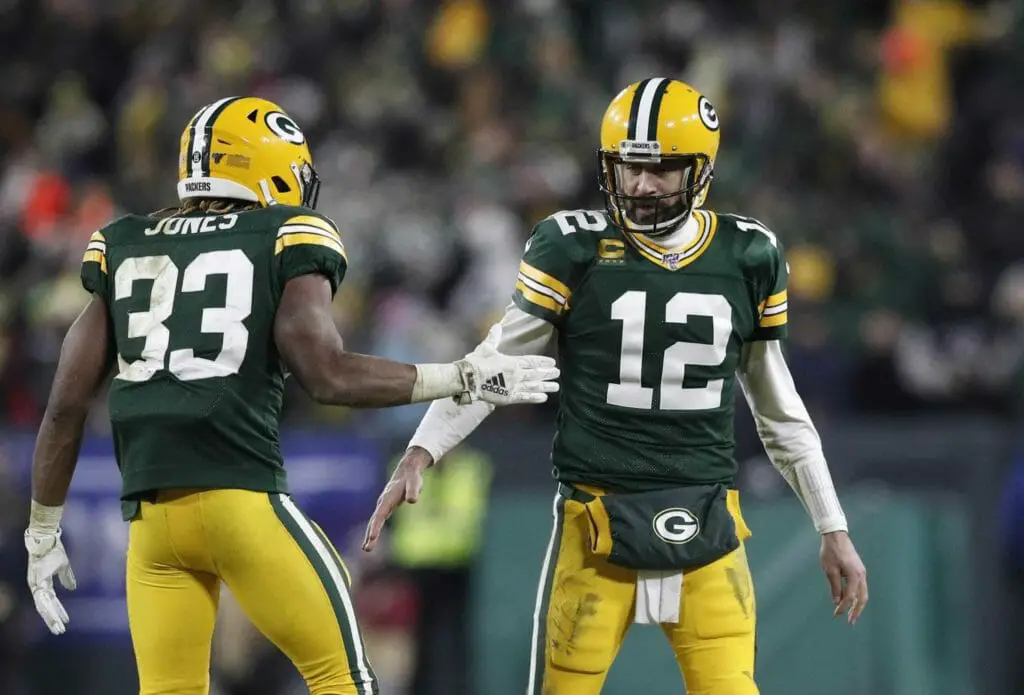As Mr. Myagi once said to his young karate student: Balance is key. It couldn’t be more true for Dynasty league fantasy football.
In Part 2, I mentioned a couple areas that would differentiate your Dynasty league from others, including roster size, positions, and number of owners. But there is an even more significant way to deviate from the norm – scoring.
I love the idea of a totally original scoring system. But commissioners beware: There is such a thing as overkill. You don’t want so many variations that your point values feel contradicting or unbalanced. Plus, it will be hard for some owners to keep track of it all.
During my fantasy rookie years – mind you, quite some time ago – whether it was a redraft or Dynasty league, the scoring system felt less important to me than other ingredients. It was an obvious oversight and I quickly noticed the err of my ways. You should literally draft players in concert with the type of scoring system your league has.
TO PPR OR NOT TO PPR
One of the biggest scoring considerations a commissioner will make is points per reception (PPR), half point per reception (half PPR) or standard, which means no PPR at all. Owners have to keep in mind that PPR is just as important for the running back position as it is for the wide receivers.
WIDE RECEIVER – PPR
You will often see very little disparity between the top 10 to 15 wideouts no matter if it was PPR, half point PPR, or standard. But when you get to back end wide receiver twos or wide receiver threes, it can change the makeup of your lineup.
[pickup_prop id=”3830″]
For example, Tyler Boyd was WR37 for standard scoring in 2020, and WR29 in PPR. Being a mid tier wide receiver three at number 29 as opposed to a wide receiver four is noteworthy. He was probably in your lineup most weeks in a PPR league, while in standard, either at the Flex spot or simply on the bench – especially after Joe Burrow went down.
One of my favorite wideouts to own is Cooper Kupp. Same thing applies here. Owners’ excuses to stay away from Kupp is the inability to put up high touchdown numbers (which really isn’t a solid argument to begin with), so his value takes a hit. But, in what could easily be considered a down year in 2020, Kupp was WR34 in standard leagues and WR26 in PPR. Still not a terrible value for a player getting drafted in the seventh or eighth round.
RUNNING BACK – PPR
Heading into the 2020 fantasy season, guys like Derrick Henry likely went between the third and fifth overall pick in standard drafts. But in a full PPR, it wasn’t a shock to see him drop to the mid, even late, first round, simply because he doesn’t catch the ball much (19 catches, 114 yards, zero touchdowns in 2020). This is what makes players like Alvin Kamara and Christian McCaffrey so valuable, obviously. But it also makes guys relevant who otherwise wouldn’t be – see the 2020 versions of Nyhiem Hines and JD McKissick, among others.

There’s strategy involved in both standard scoring or full PPR. The pool of capable backs expands in a PPR league, while in a standard league, having a touchdown heavy, top back sets your team apart that much more.
POINTS FOR YARDS
Giving one point every 10 yards for wideouts and running backs is the default setting. This can easily be adjusted. For whatever reason, owners love seeing large point totals, so they think getting points for everything should be involved. Therefore, some leagues turn to fractional scoring; in short, if a player gets nine yards rushing they get .9 points instead of 0.
As for quarterbacks, one point for every 25 yards is typical. There are plenty of different yardage points to choose from though, normally anywhere from 20 to 50.
Other than potential bonuses, there are not a ton of ways to digress when it comes to points for yardage.
POINTS FOR TOUCHDOWNS
There are really no qualms about six points for every touchdown – except when it comes to the quarterback spot.
Depending on how many points you give for quarterback air yards, and minus points for turnovers, is how you want to determine point value for throwing touchdowns. I know a lot of commissioners who like to give the full 6 points. Usually their rationale is that if a quarterback is the most important position in real-life football, they should be impactful when it comes to fantasy football. Depending on some of your other scoring when it comes to the QB positions, that can make your league too quarterback-dependent.
Again, balance.
Usually four points per touchdown throw is the low end. Some leagues may decide to meet in the middle at five points.
BONUS POINTS
I’ve been associated with a Dynasty league for 15 years that I’ll likely reference in future articles. Players get one point for every 25 yards. However, they earn three bonus points if they hit the 100 yard mark. Also, instead of PPR, players receive one point for every five catches. Seems somewhat odd, but we haven’t changed the scoring in the 15 years the league has existed, and every owner is in tune with the point system. So if a player has four catches for 99 yards, they earn three points.

For the quarterback, it’s just one point per 50 yards and four bonus points for getting 300 yards. An embedded factor in our scoring is not giving any minus points for interceptions or fumbles. This made a guy like Jameis Winston the number one QB in our league in 2019, even though he threw 30 interceptions.
Having a system like this equates to purposely seeking out players who have the ability to reach those bonus plateaus. So even though QBs only get four points per TD throw and one point per 50 yards, there are no negative points for turnovers while also having the ability to get the 300-yard bonus.
Yet again, balance.
WHY SOME BONUSES MAY BE A BAD IDEA
Each commissioner will have a different mindset, and some want to see as many points scored as possible. They’ll give other bonuses for things like a 40-plus yard touchdown catch, run, or throw. To me, bonuses in general don’t make sense if a league is PPR and six points for throwing touchdowns, etc. Points are fun to accumulate and all, but it has to equate. Why give a player more points when they already got their owner plenty for a 40-yard touchdown run/catch/throw? Plus, sometimes those long scores can be pretty fluky – i.e. a DeAndre Hopkins Hail Mary at the end of a game.
The counter is, it can add a layer to your draft strategy, allowing players like Marques Valdes-Scantling to be more relevant.
OTHER SCORING OPTIONS
I always recommend trying to think outside the box, within reason of course. A recent trend includes a player getting a point if they get a first down on their run or catch. There are some super exotic leagues that even score based on quarterback completion percentage and quarterback passer rating. Some leagues may want to highlight the tight end spot so they’ll make it 1.5 PPR for tight ends only.

Yes, you can always change the scoring system as your Dynasty league evolves, but doing that will make players on current rosters either more or less valuable, which will likely disgruntle some owners. Although, changes here or there may be worthwhile if owners are calling for it.
WHAT’S TO COME
There’s one more part to the four-part introduction series to Dynasty league fantasy football. We will wrap it up with odds and ends like types of drafts, waiver wire transactions, playoff set up and payouts.
For more great content follow me on Twitter at @lilpeds and follow us at @WiscoHeroics1! To keep up with everything in Wisconsin sports, click here.





